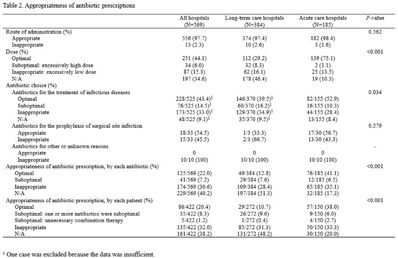174 results
Advancing digital healthcare engineering for aging ships and offshore structures: an in-depth review and feasibility analysis – ERRATUM
-
- Journal:
- Data-Centric Engineering / Volume 5 / 2024
- Published online by Cambridge University Press:
- 20 September 2024, e21
-
- Article
-
- You have access
- Open access
- HTML
- Export citation
Lagrangian-based simulation method using constrained Stokesian dynamics for particulate flows in microchannel
-
- Journal:
- Journal of Fluid Mechanics / Volume 990 / 10 July 2024
- Published online by Cambridge University Press:
- 12 August 2024, A3
-
- Article
-
- You have access
- Open access
- HTML
- Export citation
Advancing digital healthcare engineering for aging ships and offshore structures: an in-depth review and feasibility analysis
-
- Journal:
- Data-Centric Engineering / Volume 5 / 2024
- Published online by Cambridge University Press:
- 03 June 2024, e18
-
- Article
-
- You have access
- Open access
- HTML
- Export citation
Boxwork Fabric of Halloysite-Rich Kaolin Formed by Weathering of Anorthosite in the Sancheong Area, Korea
-
- Journal:
- Clays and Clay Minerals / Volume 41 / Issue 1 / February 1993
- Published online by Cambridge University Press:
- 28 February 2024, pp. 56-65
-
- Article
- Export citation
The Effects of Biogeochemical Modification of Fe-Rich Smectite on the Fate of Pb
-
- Journal:
- Clays and Clay Minerals / Volume 65 / Issue 6 / December 2017
- Published online by Cambridge University Press:
- 01 January 2024, pp. 410-416
-
- Article
- Export citation
The Characterization Of CaCO3 in a Geothermal Environment: A Sem/Tem-Eels Study
-
- Journal:
- Clays and Clay Minerals / Volume 60 / Issue 5 / October 2012
- Published online by Cambridge University Press:
- 01 January 2024, pp. 484-495
-
- Article
- Export citation
Review of Clay-Drug Hybrid Materials for Biomedical Applications: Administration Routes
-
- Journal:
- Clays and Clay Minerals / Volume 64 / Issue 2 / April 2016
- Published online by Cambridge University Press:
- 01 January 2024, pp. 115-130
-
- Article
- Export citation
54 Exploring the Impact of Stria Terminalis Connectivity and Family Income on Depressive Symptoms Throughout Development
-
- Journal:
- Journal of the International Neuropsychological Society / Volume 29 / Issue s1 / November 2023
- Published online by Cambridge University Press:
- 21 December 2023, pp. 463-464
-
- Article
-
- You have access
- Export citation
Extubation in operating room versus early extubation in ICU after open-heart surgery in patients with CHDs
-
- Journal:
- Cardiology in the Young / Volume 34 / Issue 4 / April 2024
- Published online by Cambridge University Press:
- 20 November 2023, pp. 914-918
-
- Article
- Export citation
Clinical impact of COVID-19 in patients with carbapenem-resistant Acinetobacter baumannii bacteraemia
-
- Journal:
- Epidemiology & Infection / Volume 151 / 2023
- Published online by Cambridge University Press:
- 10 October 2023, e180
-
- Article
-
- You have access
- Open access
- HTML
- Export citation
Validation of resonance Raman spectroscopy-measured skin carotenoid status as a biomarker for fruit and vegetable intake in Korean adults
-
- Journal:
- British Journal of Nutrition / Volume 130 / Issue 11 / 14 December 2023
- Published online by Cambridge University Press:
- 15 May 2023, pp. 1993-2001
- Print publication:
- 14 December 2023
-
- Article
- Export citation
Application of Deep Learning to Solar and Space Weather Data
-
- Journal:
- Proceedings of the International Astronomical Union / Volume 18 / Issue S372 / August 2022
- Published online by Cambridge University Press:
- 28 September 2023, pp. 131-149
- Print publication:
- August 2022
-
- Article
- Export citation
GaAs Substrate Reuse Using Molecular Beam Epitaxy of NaCl Layers
-
- Journal:
- Microscopy and Microanalysis / Volume 28 / Issue S1 / August 2022
- Published online by Cambridge University Press:
- 22 July 2022, pp. 2822-2823
- Print publication:
- August 2022
-
- Article
-
- You have access
- Export citation
Prescriptions patterns and appropriateness of usage of antibiotics in small and medium- sized hospitals in Korea
-
- Journal:
- Antimicrobial Stewardship & Healthcare Epidemiology / Volume 2 / Issue S1 / July 2022
- Published online by Cambridge University Press:
- 16 May 2022, p. s19
-
- Article
-
- You have access
- Open access
- Export citation
Paediatric heart transplantation recipients ≥7 years of age receiving donors with pre-existing coronary atherosclerosis showed progressive coronary artery disease
- Part of
-
- Journal:
- Cardiology in the Young / Volume 32 / Issue 7 / July 2022
- Published online by Cambridge University Press:
- 27 September 2021, pp. 1104-1111
-
- Article
- Export citation
Longitudinal symptom network structure in first-episode psychosis: a possible marker for remission
-
- Journal:
- Psychological Medicine / Volume 52 / Issue 14 / October 2022
- Published online by Cambridge University Press:
- 16 February 2021, pp. 3193-3201
-
- Article
- Export citation
LONG-TERM CHANGES IN 14C AGE DIFFERENCES BETWEEN HUMIC ACID AND PLANT FRAGMENTS AND THEIR LINKS TO PAST CLIMATE CHANGE
-
- Journal:
- Radiocarbon / Volume 63 / Issue 1 / February 2021
- Published online by Cambridge University Press:
- 03 December 2020, pp. 139-153
- Print publication:
- February 2021
-
- Article
- Export citation
Impact on National Policy on the Hand Hygiene Promotion Activities in Hospitals in Korea
-
- Journal:
- Infection Control & Hospital Epidemiology / Volume 41 / Issue S1 / October 2020
- Published online by Cambridge University Press:
- 02 November 2020, p. s267
- Print publication:
- October 2020
-
- Article
-
- You have access
- Export citation



